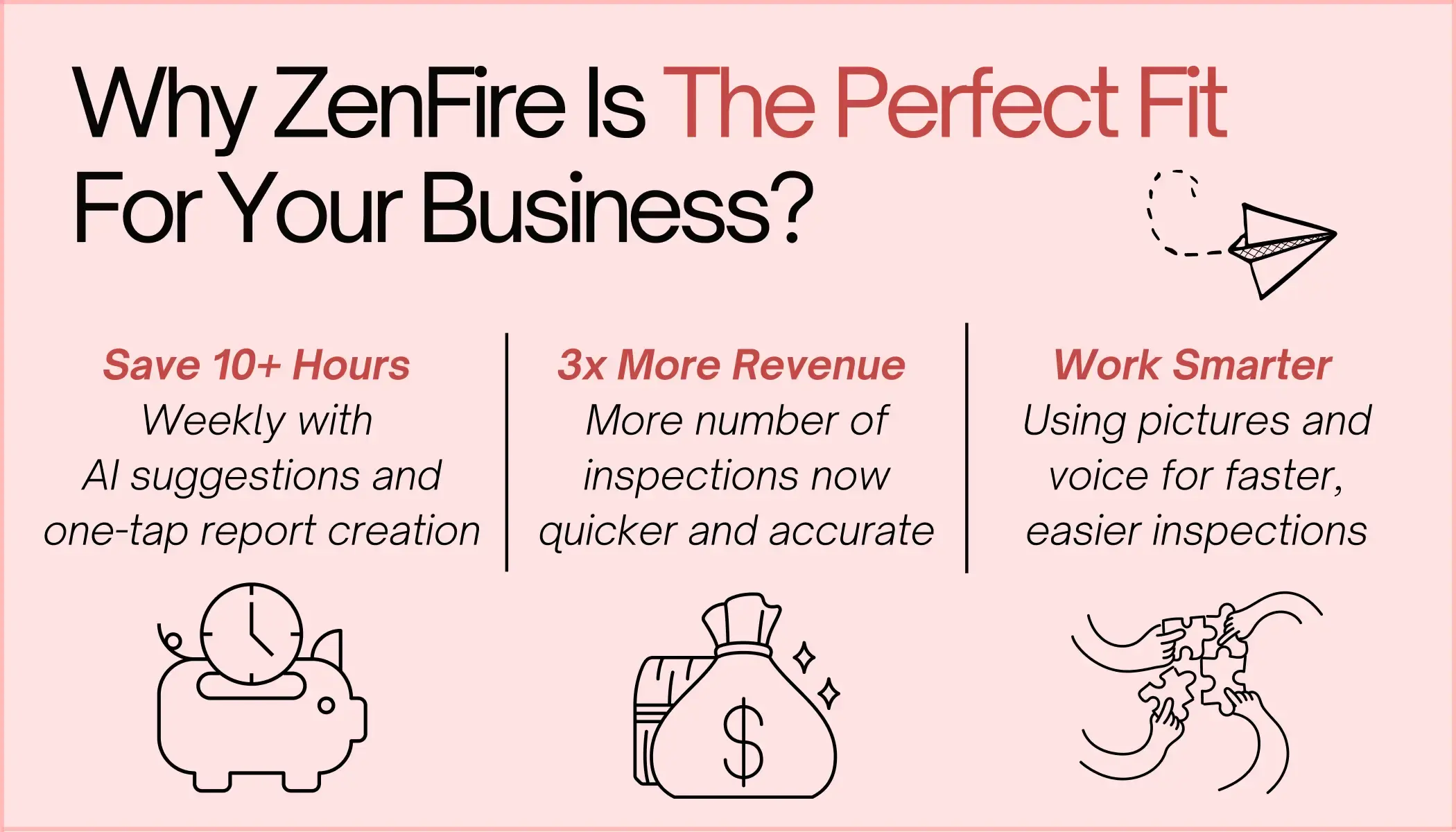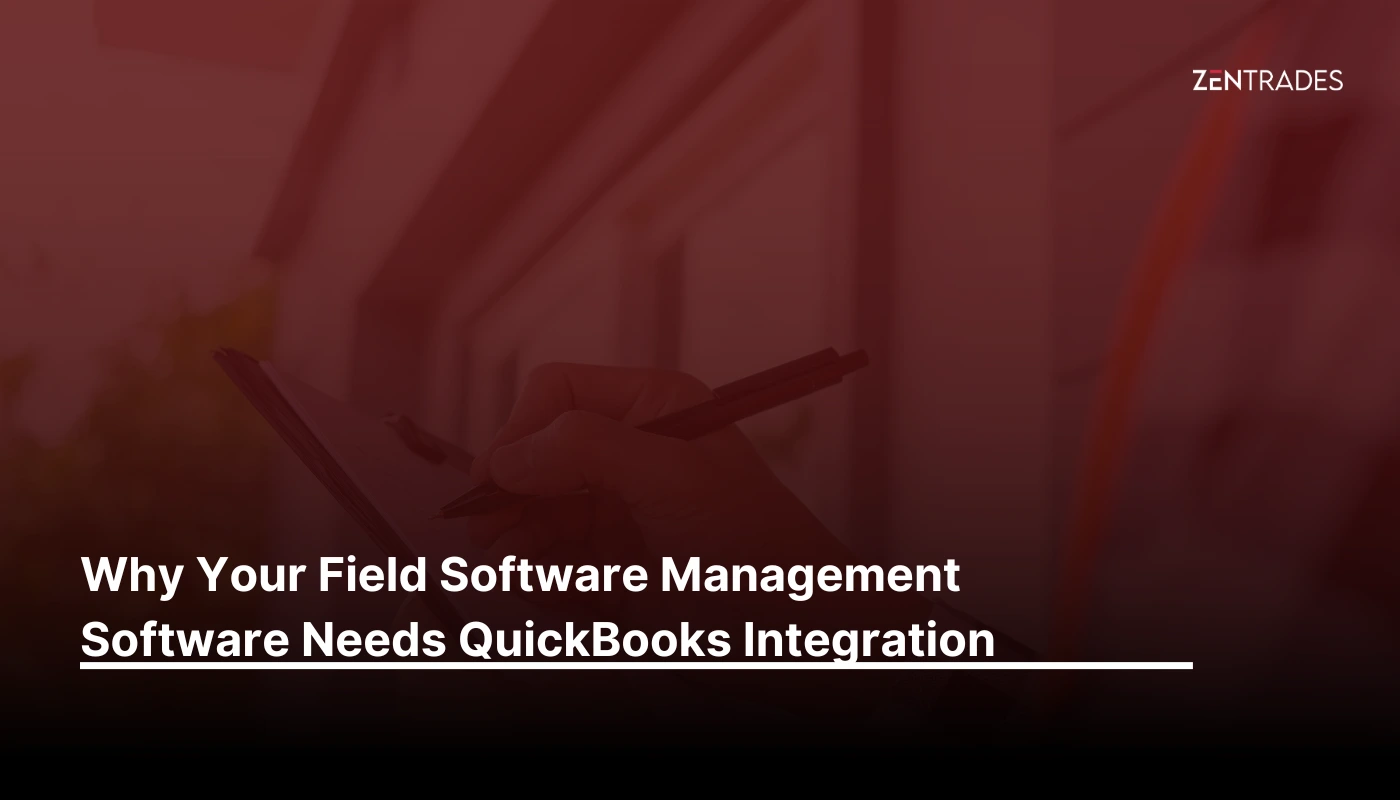
- NFPA 25 inspections in 2025 demand accuracy, speed, and compliance.
- Paper-based inspections risk missed steps and lost records.
- Mobile apps like ZenFire simplify scheduling, tracking, and reporting.
- Voice-to-text and photo tools improve on-site documentation.
- Automated, compliant reports reduce liability and save time.
If you have ever had to carry around a clipboard and thousands of paper checklists, struggled in reading a messy report from last quarter, or wasted hours in checking the monthly inspection schedules for different sites, then you have come to the right place.
The fire sprinkler market is projected to grow at a CAGR of 7.1% from 2025 to 2033 and reach a market size of $10.2 billion by 2033. That’s why in 2025, NFPA 25 inspections are going to be more demanding than ever. Building owners would expect faster, accurate inspections and proactive reminders about upcoming ones, while AHJs (Authorities Having Jurisdiction) would demand a detailed report that is legally compliant.
That’s why drowning in paperwork and using traditional fire sprinkler inspection procedures won’t work in an era where technology is rapidly growing. ZenFire is an AI-powered fire inspection software that provides digital solutions such as automated scheduling, smart dispatching, deficiency reporting, automatic generation of AHJ-compliant reports, estimates, proposals, invoices, and much more.
Schedule a free demo with ZenFire today, and we will not only streamline your fire sprinkler inspections but also boost your revenue in exceptional ways!
Being in the fire protection industry, you already know that it is mandatory for a fire sprinkler system to undergo a thorough annual inspection that covers pipework, fittings, and sprinkler heads. Additionally, every five years, sprinkler pipes must be internally inspected, even though the updated edition of NFPA 25 (National Fire Protection Association) focuses on the fast-response sprinklers to be tested 25 years after installation. But how can you manage these inspections without juggling outdated paperwork, struggling to keep up with the evolving codes, and risking liability for every missed control valve or unreported gauge discrepancy?
In this article, we are going to discuss the top five digital platforms, apps, and software that will streamline every step of the fire sprinkler inspection process.
Table of Contents
How Technicians Struggle With Fire Sprinkler Inspections
Regular Testing
According to NFPA 25, fire sprinkler testing must be conducted weekly, monthly (pipe system gauges, water pressure, alarm valves), quarterly (visual inspection of water flow alarm devices, hydraulic nameplates, fire department connections), annually (pipework and fillings, spare sprinklers, sprinkler heads, information signage), and every 5 years (sprinklers installed in harsh environments). And then there are other types of sprinklers, such as fast-response, ESFR, CMSA, and dry sprinklers, that have various testing frequencies. Tracking these varied frequency cycles across multiple sites can be quite overwhelming, which often results in missed inspections, outdated paperwork, and scheduling chaos.
Retention Of Documentation
NFPA 25 says that all inspections, testing, and maintenance of water-based fire protection systems are to be documented in a format that is accessible to the building owners and AHJs, and these reports must be kept for years and should be legible, complete, and accurate. However, most of the time, paper reports fade, go missing, or get lost among piles of other records.
Visual Inspection Of Control Valves, Gauges, Risers, and More
From Chapter 13 to Chapter 15, it is mentioned that components of the water-based fire protection system, like control valves, gauges, pressure switches, alarm valves, etc., should be visually inspected, and any abnormal conditions that could pose threats during a fire emergency are to be documented. Sometimes, while inspecting large buildings, it is likely to miss one or two valves. When using paper forms, you might not notice that you have missed a component, and there are no timestamps to confirm that you were physically present on-site.
Reporting Deficiency to The Building Owner
If there is any deficiency in the sprinkler system component, such as inoperative fire pumps or sprinkler control valves, that is affecting the sprinkler performance, then the technician needs to document it and report it to the building owner. There are times when technicians often jot down notes and verbally communicate the deficiency, which doesn’t count under NFPA 25.
Digital Tools For Fire Sprinkler System Inspections
Mobile NFPA 25 Inspection App
Carrying a mobile inspection app like ZenFire that works on both Android and iOS solves half of the challenges that both technicians and fire safety contractors face daily during fire sprinkler system inspections. Field technicians can easily log in using their mobile device or tablet and will be able to view all the assigned services for the day. They can go through the inspection history of each client that is stored in the cloud, use the built-in NFPA-compliant checklists and forms for fire sprinklers, and take photos of any deficiency, such as physical damage, loss of fluid in a glass bulb, or corrosion, and add text to the photos. With voice-to-text functionality, one can just speak while inspecting any sprinkler type, like dry, wet, or corrosion-resistant sprinklers, and the text will be automatically added to the inspection document. After the inspection is over, the technician can automatically generate an AHJ-compliant report with added photos, a digital signature, and a business logo in minutes.
Schedule, Dispatch, and Workflow Automation
Manually tracking multiple fire sprinkler inspections is full-time work in itself. ZenFire provides automated scheduling that helps you assign inspections based on the due date, technician availability, and occupancy risk. You will also get automatic reminders for reinspections or deficiency resolution, plus with our geo-tagging feature, you get to assign jobs to your technician in real-time based on their nearest location, their availability, and job priority. This way, you can manage a significant volume of fire sprinkler inspections efficiently and simultaneously reduce fuel costs.
Customizable NFPA-Compliant Checklists and Forms
ZenFire provides you with the option to customize our in-built NFPA-compliant checklists and forms, and you can also add your own checklist that is compliant with the local regulations. Whenever NFPA 25 updates its regulations, ZenFire updates the forms centrally so your technicians don’t have to revise entire checklists and forms to meet the compliance.
Automatic Generation Of Deficiency Reporting
With ZenFire, you can automatically generate AHJ-compliant reports that include time-stamped photos, a digital signature, deficiency notes, and the next scheduled test date with your business logo on it.
Conclusion
The fire protection industry is evolving very rapidly. And as the regulatory requirement is becoming complex and client expectations are increasing, there’s no way one can afford the cost of a missed inspection or follow-up and lost paperwork. In 2025, the best strategy to deal with these challenges is to adopt digital solutions.ZenFire is an AI-powered fire inspection software that provides digital solutions such as automated scheduling, smart dispatching, NFPA-compliant checklists and forms, and automatic generation of reports with photos and digital signatures embedded on them.
Schedule a free demo with ZenFire today, and we will not only streamline your fire sprinkler inspections but also boost your revenue in exceptional ways!

Get Insights Delivered Straight
To Your Inbox!
Related Reading
Why Your Field Software Management Software Needs QuickBooks Integration
ZenTrades Why Your Field Service Management Software Needs QuickBooks Integration Read More Request Demo...
Read MoreZenTrades How To Manage Electrical Service Agreements Like...
Read MoreZenTrades The Best 5 Jobber Alternatives In 2023...
Read More

